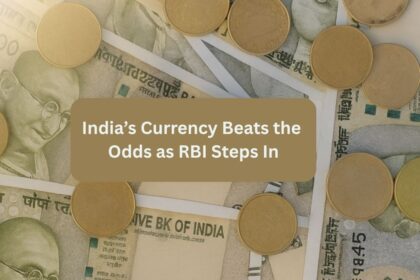India’s most comprehensive tax overhaul since the introduction of GST in 2017 has officially taken effect from September 22, 2025, following the landmark 56th GST Council meeting decisions. The Next Generation GST reforms, announced by Prime Minister Narendra Modi as part of his Independence Day address, have simplified the complex four-slab tax structure into a streamlined two-tier system that promises significant savings for millions of Indian households.
Revolutionary Tax Structure Simplification
The new GST framework has eliminated the confusing 12% and 28% tax brackets, replacing them with a cleaner structure consisting of 5% for essential goods, 18% for standard items, and 40% for luxury and sin goods. This major restructuring affects over 175 different product categories, making everyday items more affordable while discouraging consumption of harmful products through higher taxation.
Union Finance Minister Nirmala Sitharaman, who chaired the GST Council meeting, emphasized that these reforms prioritize the common man, aspirational middle class, and key economic drivers including agriculture, healthcare, and manufacturing sectors.
Electronics and Home Appliances: Major Price Drops
Consumer electronics have emerged as the biggest beneficiaries of the GST rate cuts, with appliances moving from the 28% bracket to 18%. Air conditioners, refrigerators, washing machines, dishwashers, and large-screen televisions are now 8-10% cheaper, providing substantial relief to households planning festive season purchases.
Major electronics companies have already announced revised pricing. Whirlpool has reduced air conditioner prices by ₹4,509 to ₹5,259 for 1-ton units, while dishwashers are cheaper by ₹3,282 to ₹4,336. Television manufacturers are offering discounts ranging from ₹2,500 for 43-inch models to ₹85,000 for premium 100-inch displays.
The GST reduction means a ₹30,000 air conditioner that previously cost ₹38,400 (including 28% GST) will now be priced at approximately ₹35,400, saving consumers ₹3,000. Similarly, large-screen TVs, washing machines, and other appliances show proportional savings.
Automobile Sector: Mixed Impact Based on Engine Capacity
The automotive industry experiences a nuanced impact under the new GST structure. Small cars with petrol engines up to 1200cc or diesel engines up to 1500cc, and motorcycles up to 350cc have moved from 28% to 18% GST, making entry-level vehicles significantly more affordable.
Major automotive manufacturers including Bajaj Auto, Honda, Royal Enfield, and TVS have announced price reductions ranging from ₹5,000 to ₹24,500 across different models. Popular commuter motorcycles like Honda Activa are now ₹7,900 cheaper, while Honda Shine sees a ₹5,600 reduction.
However, motorcycles above 350cc and larger cars have moved to the 40% luxury bracket, making premium vehicles more expensive than before. This strategic move aims to make basic mobility affordable while discouraging luxury consumption.
Food and Dairy Products: Essential Relief
The food sector has received comprehensive relief with multiple items moving to lower tax brackets or becoming completely tax-free. UHT milk, chapati, paratha, and paneer are now GST-exempt, while products like butter, ghee, cheese, and dairy spreads have moved to the 5% bracket.
Major dairy brands Amul and Mother Dairy have implemented immediate price reductions. Paneer prices have dropped by 3% with a 200gm packet now costing ₹92 instead of ₹95, while UHT milk is 3% cheaper at ₹75 per litre. Butter, ghee, and other dairy products show similar savings of 4-8%.
Packaged foods including chocolates, pasta, biscuits, namkeens, and dry fruits have moved from 12-18% to the 5% bracket, making these items substantially more affordable for households.
Healthcare Revolution: Insurance Becomes Tax-Free
One of the most significant reforms affects the healthcare sector, with individual health and life insurance premiums becoming completely GST-exempt from September 22, 2025. Previously, policyholders paid 18% GST on insurance premiums, making coverage expensive for many families.
This change means a ₹10,000 health insurance premium that previously cost ₹11,800 with GST will now cost exactly ₹10,000, saving policyholders ₹1,800 annually. The exemption covers term life insurance, ULIPs, endowment plans, individual health insurance, family floater plans, and senior citizen health policies.
Insurance industry experts predict this move will boost insurance penetration significantly, particularly among first-time buyers and underserved populations, supporting India’s vision of “Insurance for All by 2047”.
Construction and Housing Sector Benefits
The construction industry receives substantial relief with cement prices dropping from 28% to 18% GST, translating to savings of ₹26-28 per bag. This reduction is particularly significant as cement accounts for 10-12% of total construction costs in residential projects.
Granite and marble blocks, sand-lime bricks, and stone inlay work have moved from 12% to 5%, providing additional savings for construction projects. Industry experts estimate these changes will reduce overall construction costs by 3-5%, making housing more affordable and supporting the government’s “Housing for All” mission.
Personal Care and Daily Essentials
Personal care products have received significant relief with items like toothpaste, shampoo, hair oil, soap, and grooming products moving from 12-18% to the 5% bracket. This change directly benefits household budgets as these are frequently purchased items.
Baby products including diapers and feeding essentials are also cheaper, providing relief to young families during a time of high childcare costs.
Sin Goods Face Higher Taxation
The new framework introduces a 40% GST bracket specifically targeting sin and luxury goods. Tobacco products, pan masala, aerated drinks, and luxury vehicles now face higher taxation to discourage consumption and generate additional revenue for public health initiatives.
Carbonated beverages, sugary drinks, and caffeinated beverages have moved from 28% to 40%, making them significantly more expensive. Similarly, luxury cars, motorcycles above 350cc, yachts, and personal aircraft now attract the highest tax rate.
Health Minister J.P. Nadda has called this a “big win for public health,” as higher taxes on harmful products like tobacco and sugary drinks will help reduce the burden of non-communicable diseases.
Implementation Timeline and Industry Response
Most GST rate changes became effective from September 22, 2025, coinciding with the start of Navratri festivities. However, tobacco products including cigarettes, chewing tobacco, and pan masala will continue under existing rates until compensation cess obligations are fully discharged, likely by the end of 2025.
Companies across sectors have committed to passing on the full benefits of tax reductions to consumers. Prime Minister Modi described the reforms as a “Bachat Utsav” (savings festival), estimating that combined with income tax cuts, Indians will save nearly ₹2.5 lakh crore annually.
Economic Impact and Future Outlook
The GST reforms are expected to boost consumption, particularly in price-sensitive segments, and support economic growth during the crucial festive season. The simplified tax structure will reduce compliance burdens for businesses while making goods more affordable for consumers.
Industry analysts predict increased demand for consumer durables, automobiles, and housing projects as lower prices make these items more accessible to middle-class families. The timing ahead of festivals like Navratri and Diwali is strategically significant for maximizing economic impact.


























